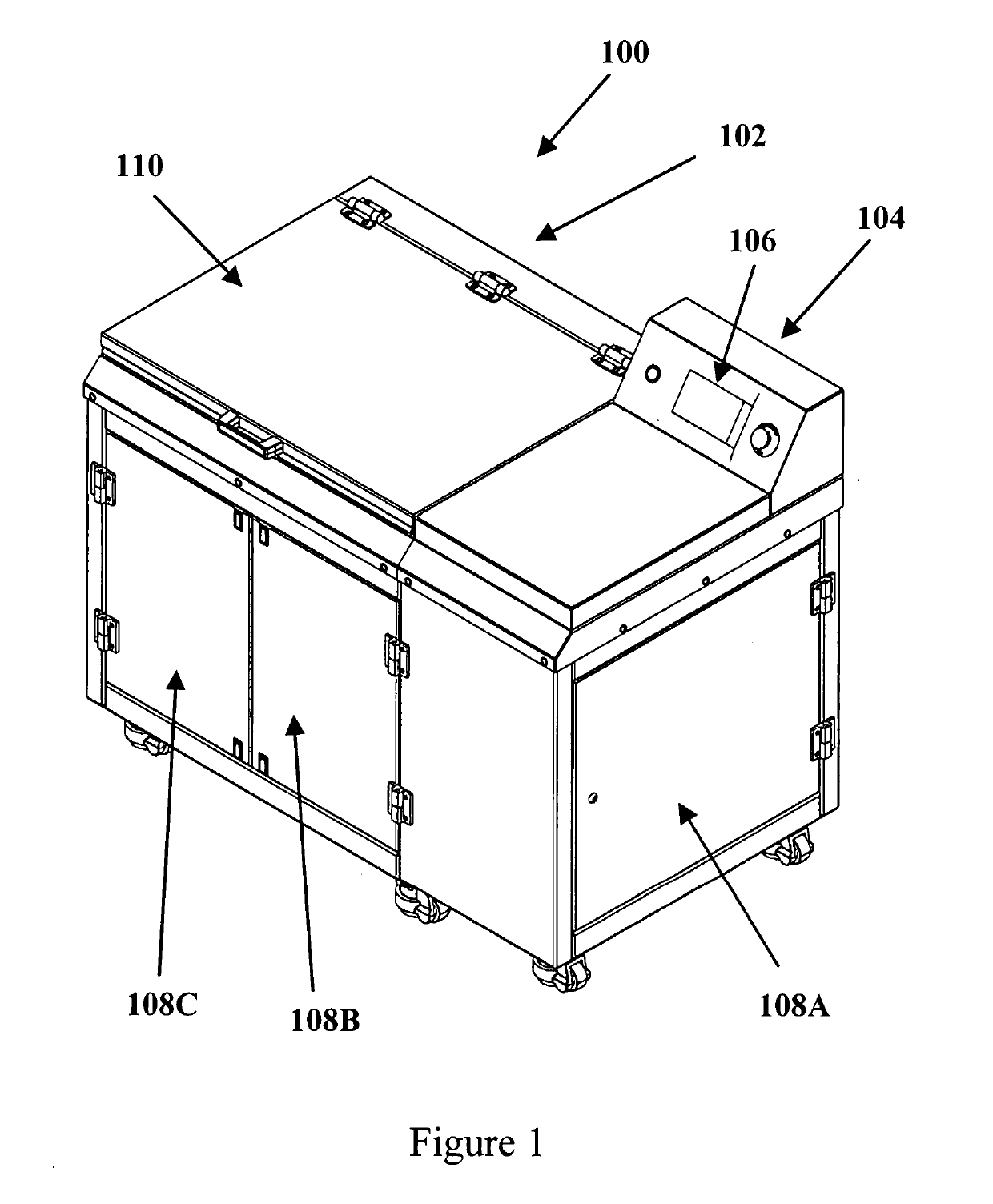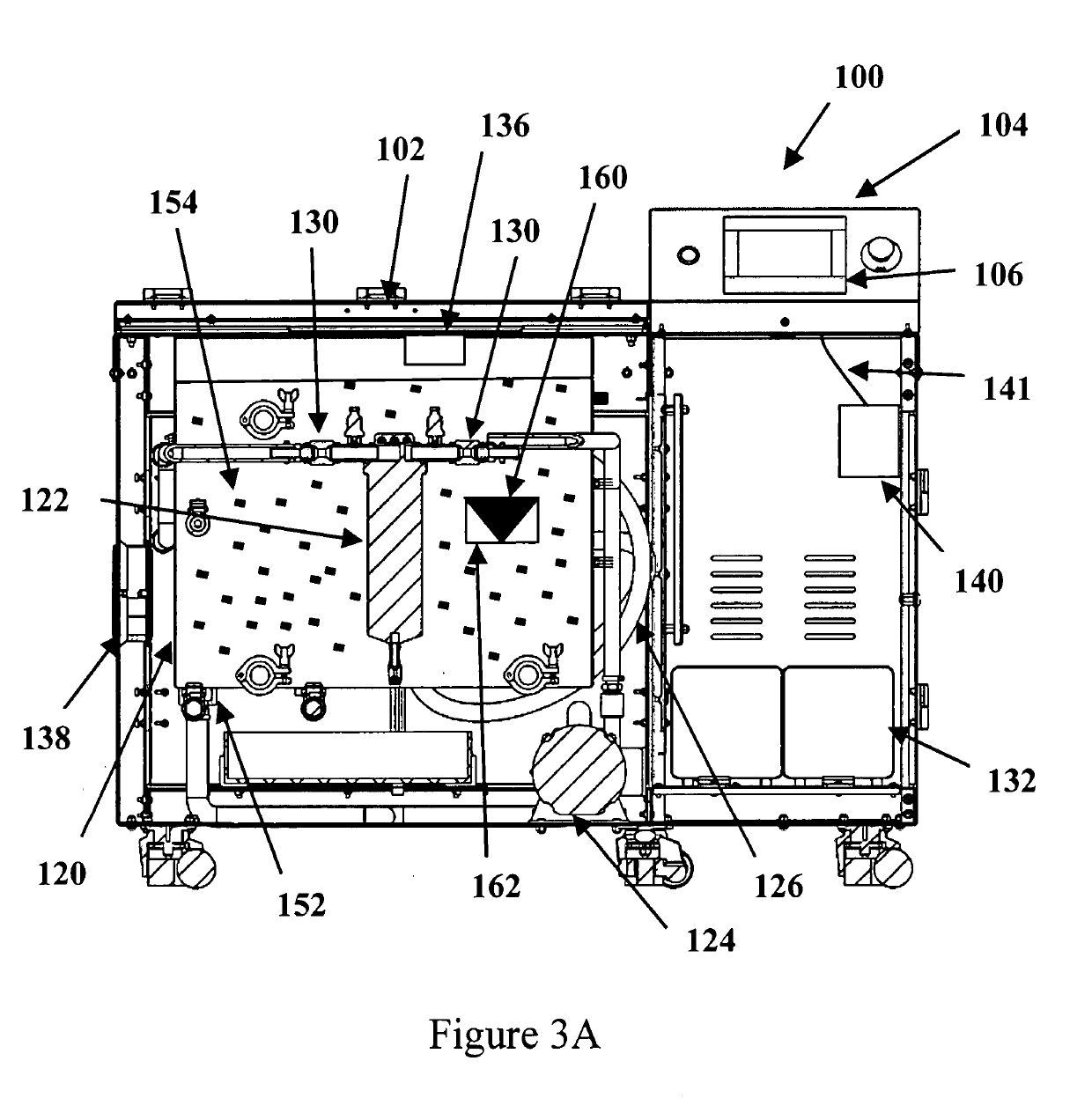Self-Modifying Agitation Process And Apparatus For Support Removal In Additive Manufacturing And 3D Printed Material
a technology of additive manufacturing and agitation process, which is applied in the direction of manufacturing tools, transportation and packaging, and cleaning using liquids, etc. it can solve the problems of inability to optimize the rate of support removal, the complexity of the methods used to control the removal rate of support, and the final unwanted part in the finished form. , to achieve the effect of maximizing the removal rate, limiting the damage to the part, and enhancing the removal of suppor
- Summary
- Abstract
- Description
- Claims
- Application Information
AI Technical Summary
Benefits of technology
Problems solved by technology
Method used
Image
Examples
Embodiment Construction
[0036]At the outset, it should be appreciated that like drawing numbers on different drawing views identify identical, or functionally similar, structural elements of the invention. It is to be understood that this invention is not limited to the disclosed aspects.
[0037]Furthermore, it is understood that this invention is not limited to the particular methodology, materials, or modifications described and, as such, the invention may vary from that which is disclosed herein. It is also understood that the terminology used herein is for the purpose of describing particular aspects.
[0038]Unless defined otherwise, all technical and scientific terms used herein have the same meaning as commonly understood to one of ordinary skill in the art to which this invention pertains. It should be understood that any methods, devices or materials similar or equivalent to those described herein can be used in the practice or testing of the method and apparatus.
[0039]Furthermore, as used herein, “and...
PUM
| Property | Measurement | Unit |
|---|---|---|
| time | aaaaa | aaaaa |
| temperature | aaaaa | aaaaa |
| pressure | aaaaa | aaaaa |
Abstract
Description
Claims
Application Information
 Login to View More
Login to View More - R&D
- Intellectual Property
- Life Sciences
- Materials
- Tech Scout
- Unparalleled Data Quality
- Higher Quality Content
- 60% Fewer Hallucinations
Browse by: Latest US Patents, China's latest patents, Technical Efficacy Thesaurus, Application Domain, Technology Topic, Popular Technical Reports.
© 2025 PatSnap. All rights reserved.Legal|Privacy policy|Modern Slavery Act Transparency Statement|Sitemap|About US| Contact US: help@patsnap.com



